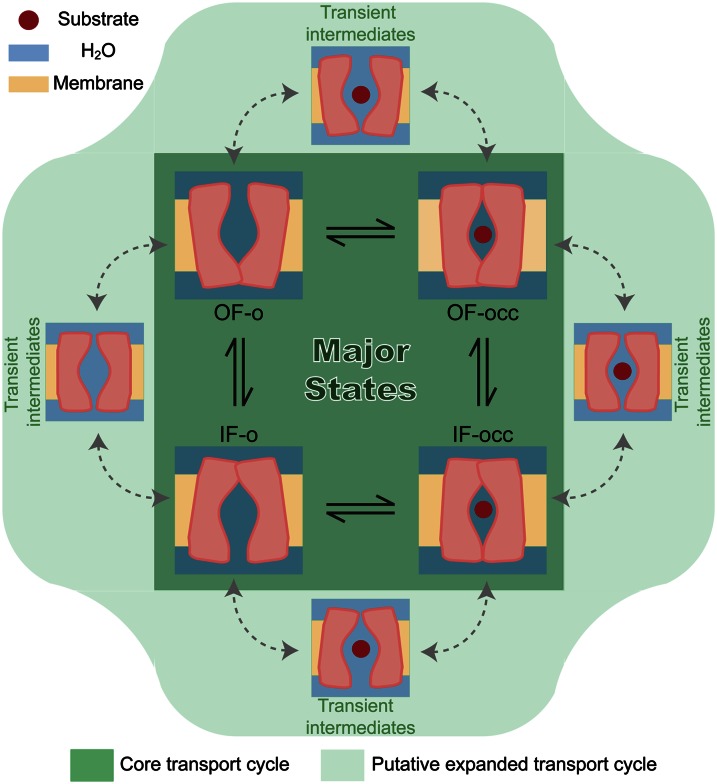Fig. 4.
Formation of water-conducting states during the transport cycle. The core transport cycle of a membrane transporter (dark green region) relies on interconversion of the protein structure between major known functional states—namely, outward-facing open (OF-o), outward-facing occluded (OF-occ), inward-facing open (IF-o), and inward-facing occluded (IF-occ) states, which have been observed in various crystal structures (24, 34, 40, 41, 45). An expanded view of the transport cycle (light green area) would involve a number of additional intermediates that arise during the transition between the major states, which due to their transient nature have not yet been structurally characterized by experiments, but can account for the uncoupled water and ion transport during the transport cycle.

